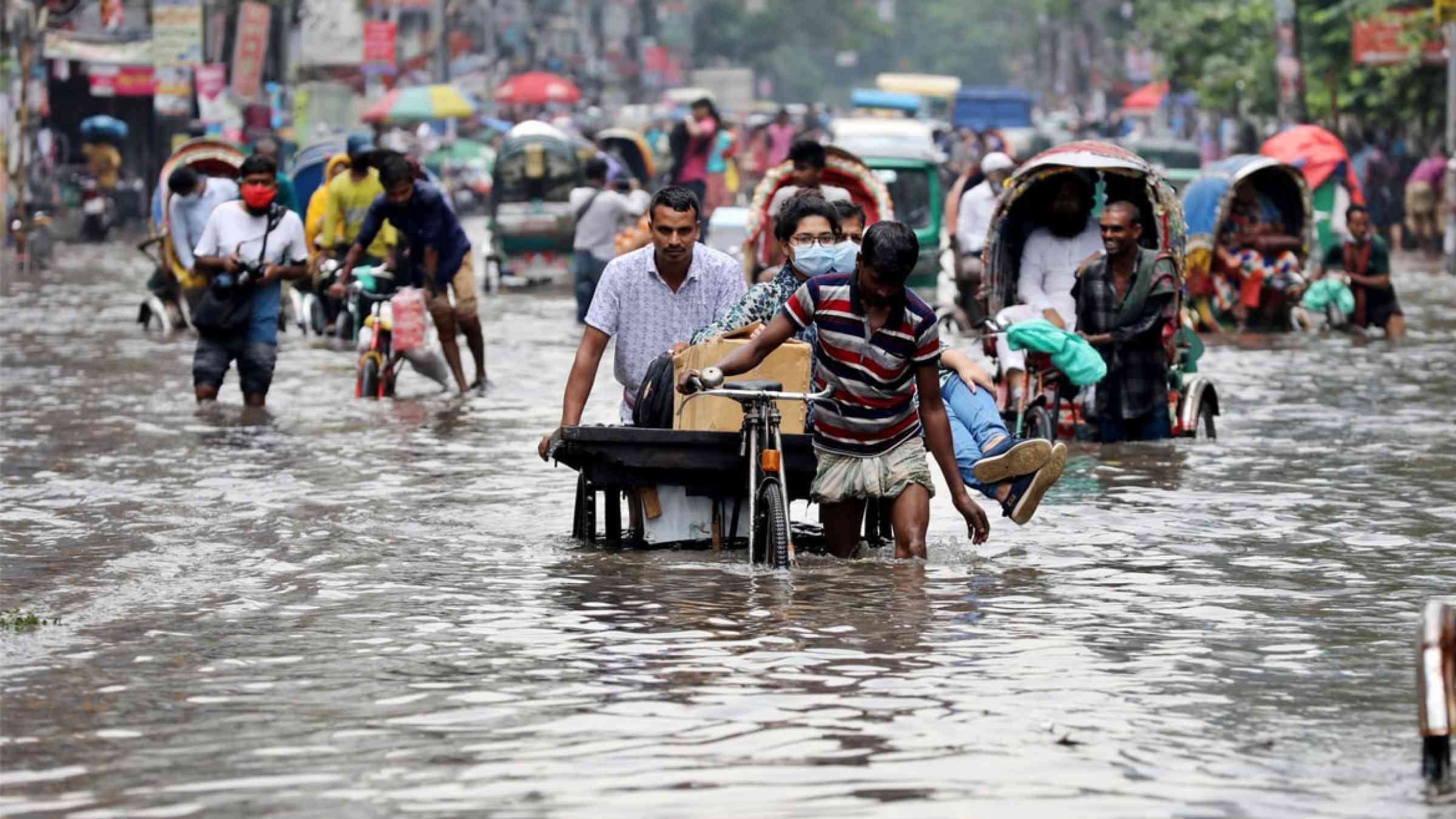Flood risk already affects 1.81 billion people. Climate change and unplanned urbanization could worsen exposure

Flooding is among the leading climatic threats to people’s livelihoods, affecting development prospects worldwide – and floods can also reverse years of progress in poverty reduction and development. While the threat is already substantial, climate change and rapid urbanization in flood zones are likely to further drive up flood risks. The latest Intergovernmental Panel on Climate Change report affirms the urgency of addressing the intensifying impacts of climate change and ensuring the adaptation and resilience of the most vulnerable.
In October 2020, the World Bank presented a working paper that offered insight into global flood risk exposure and its intersection with poverty. Now, using updated state-of-the-art flood data, the analysis just published in Nature Communications, estimates that 1.81 billion people face significant flood risk worldwide, substantially higher than the 1.47 billion estimated in the initial study. The updated study uses more accurate data on fluvial, pluvial, and coastal hazards, as well as subnational poverty. It also estimates that 170 million extremely poor people are facing flood risk and its devastating long-term consequences. Together, these findings provide alarming insights into the scale of people’s exposure and their vulnerabilities to flood hazards. A few of the key findings:
1. Exposure to flood risk is substantial, particularly in low and middle-income countries.
The estimates show that 1.81 billion people, or 23% of the world population, are directly exposed to flood depths greater than 0.15 meters in a 1-in-100-year flood event, thus posing significant risk to lives and livelihoods. Of these, 89% live in low- and middle-income countries. Moreover, 780 million flood-exposed people live on less than $5.50 a day, and 170 million flood-exposed people live in extreme poverty (on less than $1.90 a day). In short, 4 in every 10 people exposed to flood risk globally live in poverty.
2. Flood risk is global, but the most flood-exposed people live in South and East Asia.
Flood risks are a near universal threat, affecting people in all 188 countries covered in this study. At 668 million people, East Asia has the highest number of flood-exposed people, corresponding to about 28% of its total population. Across Sub-Saharan Africa, Europe, Central Asia, the Middle East, North Africa, Latin America, and the Caribbean flood exposure ranges between 9% to 20% of the population. And of the 2,084 subnational regions we analyzed, only 9 have less than 1% of their population exposed to flood risks. Almost 70% (1.24 billion) of flood-exposed people live in South and East Asia, with China and India alone accounting for over one-third of global exposure. And in several South and East Asian subnational areas, more than two-thirds of the population are exposed to significant flood risk.
3. When flood exposure and poverty coincide, the risk to livelihoods is most severe.
With next to no savings and limited access to support systems, the poorest households often experience the most devastating long-term consequences of floods. The study systematically assesses where high flood risks and poverty coincide. It finds that flooding is likely to cause the most detrimental impacts on livelihoods and well-being in Sub-Saharan Africa and South Asia, where high poverty persists. And within individual countries, risks are often concentrated in certain regions, including low-lying river basins or coastlines.
4. Relying on monetary risk estimates risks overlooking the areas most in need of protection.
Despite facing substantial vulnerabilities, monetary measures of flood risk typically overlook poorer regions and countries. When prioritizing flood protection investments, focusing on the monetary exposure of assets and economic activity skews attention towards high-income countries and economic hubs. This can mean that areas with high socioeconomic vulnerability are neglected, where flood risk mitigation measures are most urgently need to protect lives and livelihoods. The results show that flood hazards and poverty coincide in regions were socio-economic vulnerabilities and political instability are already high.
Evolving risks require urgent action
Systematic risk mitigation measures are crucial to prevent the loss of lives and livelihoods and reversal of development progress. Climate change and risky urbanization patterns are expected to further aggravate flood risk. With safe areas already occupied, new settlements and developments are increasingly spilling into high-risk areas. As spatial planning and infrastructure investments struggle to keep up with the pace of urbanization, risks build up and are locked in.
The study shows that low-income countries are disproportionately exposed to flood risks, and more vulnerable to disastrous long-term impacts. By highlighting the scale of the needs and priority regions for flood risk mitigation measures, the findings should facilitate prioritization and comprehensive action to safeguard livelihoods and prevent prolonged adverse impacts on development.